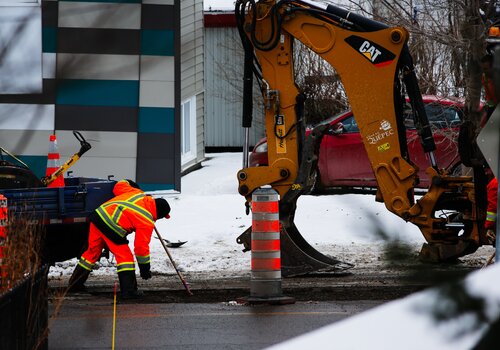Delays cost money and momentum. Learn how today’s leading contractors are building project schedules that actually work, from realistic durations and risk analysis to smarter sequencing and crew collaboration. Here’s how to create a timeline you can stick to.
1) PICK THE RIGHT DELIVERY AND PLANNING APPROACH
PMI’s Pulse of the Profession underscores that agile, predictive and hybrid approaches can all perform well. But what matters is matching the method to the context. Look at scope volatility, stakeholder dynamics and regulatory exposure rather than forcing a one-size-fits-all model.
When your risk is high design churn or evolving interfaces, build shorter planning horizons and frequent checkpoints; when scope is fixed and repetitive, lock down a predictive cadence.
Document why your approach fits this project and then build your timeline with that rationale.
2) MAKE SCHEDULE RISK ANALYSIS
You wouldn’t bid without a cost risk review; treat schedules the same way. Performing a schedule risk analysis can reveal hidden drivers of delay before a project even starts. This is similar to a budget risk analysis, but the focus is on delays and how to quickly pivot if needed.
Review past projects for where delays occurred and build extra time into your schedule. Have a backup supplier for materials. Plan for sick days and weather delays.
Be sure to share any schedule risks and solutions with all stakeholders. Conduct an annual review of projects that stayed on schedule and those that didn’t to discover the hidden, but often common, delays to prepare for the next project.
3) BASE TIMELINES ON CURRENT LABOR AND SUPPLY REALITIES
Timelines can slip when the current state of the industry is not taken into consideration. Translate macro signals from the industry as a whole into micro plan adjustments like conservative crew-day productivity, realistic mobilization gaps between trades and documented procurement windows that match actual shop capacity, not last year’s quotes.
4) USE 4D PLANNING TO EXPOSE CONFLICTS
4D planning adds the element of time to 3D models, helping contractors visualize sequences, detect clashes and prevent costly rework before construction begins. It turns scheduling into a proactive control tool rather than a static chart, improving coordination of trades, logistics and safety.
5) PLAN THE WORK WITH THE PEOPLE WHO DO THE WORK
“Realistic” timelines live where plans and reality meet. The Last Planner System (LPS) turns that into a routine: milestone planning, pull-planning to define handoffs, six-week lookaheads to remove constraints and weekly commitments that crews actually own.
6) TREAT WEATHER LIKE A KNOWN UNKNOWN, NOT AN EXCUSE
Weather isn’t random at the seasonal scale. Before you finalize the timeline, check the latest NOAA outlooks for the periods when you pour, pave or lift.
If the seasonal forecast tilts wet or hot, move weather-sensitive work to better windows, increase contingency days and stage temporary work accordingly.
Extreme weather is becoming more common and must be factored into all schedules.
7) CONTROL CHANGE; DON’T LET IT CONTROL YOUR CALENDAR
Change orders are a common trigger for delays and cost overruns on construction projects. Build a well-defined contingency plan that includes time buffers, backup resources and a risk register so that when change orders occur, you’re prepared rather than reactive.
Keep in mind the value of real-time tracking, like monitoring contingency burn rate, schedule float and change order impacts, to allow teams to adjust on the fly and keep the project under control.
PLANNING IN ACTION: A CONTRACTOR’S SCHEDULING CHECKLIST
At Pursuit or Award:
-
Create a scheduling approach that works for the project and share with all stakeholders.
-
Identify top schedule risks and assign mitigation owners.
-
Build preliminary buffers for procurement, weather and design changes.
During Preconstruction:
-
Confirm labor availability and material lead times using current market data.
-
Map high-risk phases in 4D to expose sequencing conflicts early.
-
Launch planning sessions with field leaders to validate the timeline.
-
Incorporate seasonal weather allowances into baseline durations.
During Execution:
-
Track weekly progress and flag slippage trends early.
-
Process change orders immediately and adjust the critical path.
-
Monitor contingency and float burn rate to stay proactive, not reactive.
-
Review and update the baseline monthly to reflect real-world conditions.
-
Communicate schedule impacts clearly with the full team to maintain accountability.
At CONEXPO-CON/AGG 2026 you can network with peers, attend education sessions like How Scheduling Can Bridge the Gap Between the Field and Office and discover tools to set your company apart from the competition. Register today.
Photo credit: SHUTTERSTOCK/KRONGPHOTO












